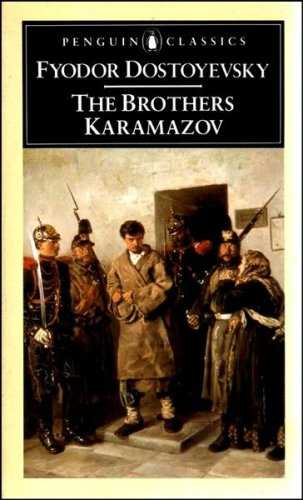Meaning of Literature Themes

Have you ever put a book down and wondered what the hell it meant? It's likely that the author didn't have a well-defined theme or didn't implement it well.
The unifying or dominant concept in a work of fiction is known as a literary theme.
This is not the same thing as the storyline. The main subject or central concept is referred to as the theme. It may be as easy as "love," "family," or "vengeance."
It can be as confusing as "science vs. nature," "youth's folly," or "commercial treachery."
Every writer's writing is about something, and that something, the story's essence, is the theme.
The importance of moral values over wealth and prestige, for example, is a major theme in Great Expectations.
In Crime and Punishment, alienation is a major theme, while in the beloved classic Princess Bride, “true love triumphs.”
.jpg)
What good is it to be familiar with big themes?
We have already discussed how a story without a central theme can be perplexing and leave the reader wanting more.
Learning about patterns, on the other hand, isn't just a way to further interpret an author's completed work of fiction. It's also an opportunity to develop your own writing skills.
The better the work as a whole is, the greater the writer's theme is, and the more in tune the writer is with the theme's execution. In your own writing, ask yourself the following questions
- what is my story really about, under all the characters and subplots?
- Is it about love triumphing above all?
- Isn't it true that good still triumphs over evil?
- concerned about the risks of progress?
Spine in Literature
Your story will almost always have a “spine.” This is a one-sentence summary of your book's middle. For example, Pride and Prejudice's "spine" could be described as "a man and woman in the Regency era overcome their preconceptions to eventually find love," with matrimony and, you guessed it, prejudice as two major themes.
.jpg)
This will seem to be too simplistic, but that's fine. The theme is meant to be an oversimplification of the context of the plot.
It's helpful to look at all of your characters, circumstances, and plot developments through this lens once you've established your theme and the spine of your story. Let's say your theme is "in the end, love fails."
Even in your love story's happiest moments, it's a good idea to have any foreshadowing of love's impending doom. This improves the quality of your prose.
Developing a theme
Motifs and icons are two of the most popular ways to develop a theme in prose. A motif is a literary structure that repeats itself and aids in the creation of your theme.
It is a clever pattern that repeats things, characters, and even the weather to reinforce the theme. Changing weather patterns, for example, most times illustrate the shifting tone
A symbol is similar to a motif, but smaller. It's a picture, character, or object with a deeper meaning than meets the eye.
.jpg)
Concept of theme in a story
A literary theme differs from a story. Although a plot describes the sequence of events in a work of fiction, the theme refers to the book's overarching sense and intent.
The theme is the point at which fiction and reality collide. While it is a tale of hobbits in Middle Earth, the theme of friendship and good triumphing over evil is still relevant in today's world.
A theme in literature is a recurring thread or key concept that runs through a piece of literature.
A novel's or story's theme is the central message that runs through the entire work.
The theme can be stated directly, but it is most frequently discovered by reading the work in-depth and examining the plot, characters, and literary devices used in the story.
A work's theme is distinct from its topic, which is ostensibly "about" the plot. The writer's point of view on the topic is expressed in the theme.
For example, the topic of a story may be war, with the theme being that war happens in endless cycles that mankind is compelled to repeat.
A literary theme can be presented in a variety of ways by authors. Different characters' thoughts and behavior may be used to convey the theme, whether overtly or implicitly. The theme could also be conveyed through character conversations and dialogue.

Theme in The brothers Karamazov
Various characters may often reflect various aspects of a theme. Brothers Ivan and Alyosha, for example, in Dostoevsky's "The Brothers Karamazov," represent skepticism and faith in religion, and together depict the novel's theme of the rivalry between the two.
Themes are carefully intertwined with all other aspects of the plot in the best works of literature, and they are only completely exposed as the text progresses.
It can be difficult to define a theme in literature. It can be helpful to describe what it isn't. It has little to do with the storyline (what characters do). It has little to do with the storyline (the topic the author writes about).
It is rarely stated explicitly. Let's look at what is not a theme now that we know what it is. Usually, it is the plot's lesson or moral.
Nature of themes in Literature
Themes may be major or minor in nature. The main theme is a concept that the author refers to in the book.
Minor themes are concepts that appear in the story just a few times.
The concept of “crime does not pay” is a popular one among mystery authors.
A minor theme may be “overcoming adversity,” in which a character discovers new love after a series of unsuccessful relationships.
.jpg)
In certain cases, the theme is assumed. It's exposed by subtext, minor information, and incidents that aren't explicitly stated. Authors articulate themes through:
- the main character's emotions and thoughts
- interactions between characters
- the main character's attitude or point of view as the plot progresses
- the actions of the characters throughout the story
You will find your theme by examining your values, behaviors, thoughts, and goals.
A book's theme is a concept about life, human nature, or social elements that the author shares with her readers.
Author Bio
This user has not submitted a user bio yet
Article Comments
No Comments!
At present there are zero comments on this article.
Why not be the first to make a comment?
Similar Articles
Sponsor
Search Articles
Experts Column
Latest Articles
Featured Articles
Most Popular Articles












